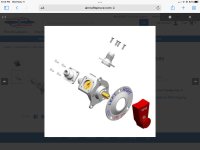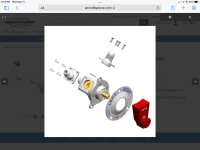On my RV-10 I had a recent engine stumble that I'm trying to wrap my head around. After fueling we took off on the first flight of the day from northern CA eastbound and climbing though 17,000' I switched from left to right tank. As soon as I moved the handle the engine quit so I promptly rotated the fuel selector back and she came back to life. We decided to make a precautionary landing nearby to check things out and upon landing ran up the engine on both tanks and couldn't duplicate the problem, of course.
I'm running EFII System32 which has a recirculating fuel line that maintains constant fuel pressure to each injector and a return line to the same tank. There is no engine driven fuel pump but rather a primary and secondary electric pump, one of which is operating at all times. When this event happened the system operated properly switching from pump 1 to pump 2 when it detected the fuel pressure drop. We checked the tank vents, refueled, ran her up thoroughly and decided to continue our trip. No further hiccups.
So, the question is, who's got a theory as to why this happened? Did an air bubble form just prior to the fuel selector in the unused tank feed that hit the system when I switched tanks? Perhaps if I hadn't have switched back to the left tank so quickly after the engine stumble it would have cleared. By the way, I don't have any hot tunnel issues so I don't think heat would have been a factor. I do have a bit higher than average vibration issues and am having the prop balanced soon. Could a small amount of water become frozen in the right fuel line? This was about 25 minutes into the flight and the OAT was 20F at altitude. The day prior I had flown 2.5 hours from my home base to CA and used both tanks doing it. I also make a point to make sure I run up the engine from both tanks before departing so this wasn't the first time it had run off the right tank that day. I had checked a fuel sample from the tank drains after fueling that morning and didn't find water. I've since learned, by the way, that the Andair fuel selector is designed so that there is virtually no "dead spot" between positions and have verified this on the ground.
Any ideas? Other than the PTSD I now have every time I switch tanks, I haven't even had a hint of a problem since.
I'm running EFII System32 which has a recirculating fuel line that maintains constant fuel pressure to each injector and a return line to the same tank. There is no engine driven fuel pump but rather a primary and secondary electric pump, one of which is operating at all times. When this event happened the system operated properly switching from pump 1 to pump 2 when it detected the fuel pressure drop. We checked the tank vents, refueled, ran her up thoroughly and decided to continue our trip. No further hiccups.
So, the question is, who's got a theory as to why this happened? Did an air bubble form just prior to the fuel selector in the unused tank feed that hit the system when I switched tanks? Perhaps if I hadn't have switched back to the left tank so quickly after the engine stumble it would have cleared. By the way, I don't have any hot tunnel issues so I don't think heat would have been a factor. I do have a bit higher than average vibration issues and am having the prop balanced soon. Could a small amount of water become frozen in the right fuel line? This was about 25 minutes into the flight and the OAT was 20F at altitude. The day prior I had flown 2.5 hours from my home base to CA and used both tanks doing it. I also make a point to make sure I run up the engine from both tanks before departing so this wasn't the first time it had run off the right tank that day. I had checked a fuel sample from the tank drains after fueling that morning and didn't find water. I've since learned, by the way, that the Andair fuel selector is designed so that there is virtually no "dead spot" between positions and have verified this on the ground.
Any ideas? Other than the PTSD I now have every time I switch tanks, I haven't even had a hint of a problem since.






